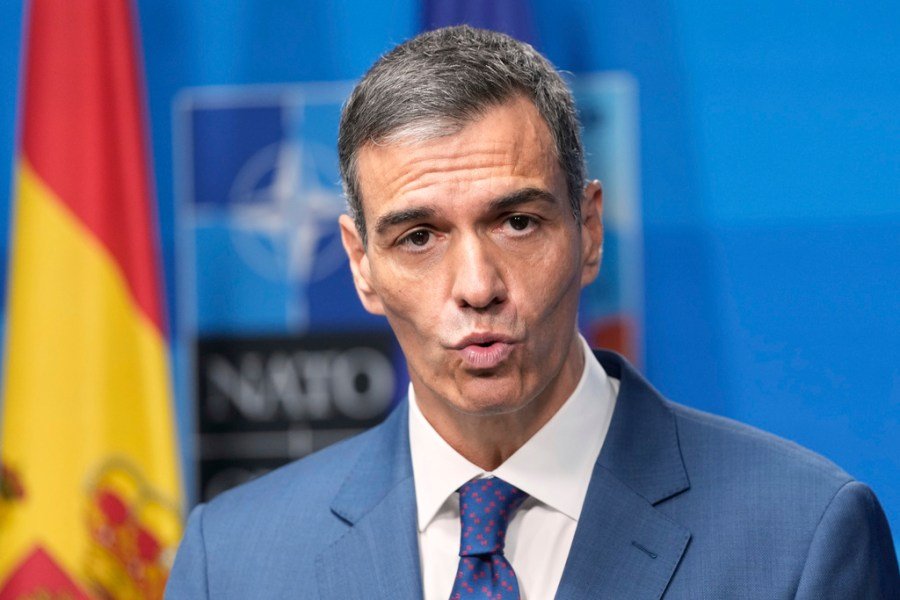
NATO faces a crisis of readiness, made worse by the European Union’s fixation on green policies that increase energy costs and undermine military preparedness.
Spain has rejected NATO’s proposed 5 percent GDP defense spending target — it is instead prioritizing green initiatives over security. The U.S., a NATO member, risks being drawn into a European conflict if deterrence through strength fails as the Russian bear threatens.
The EU’s green obsession mirrors the pitfalls of the wind and solar push in the U.S. Solar and wind penetration in states like California spiked electricity prices 98 percent between 2011 and 2023, due to dual grid systems, intermittent renewables and dispatchable gas backups. Germany, Denmark and the United Kingdom have even higher electric rates than California, and California’s are double the U.S. national average.
The EU plans €1.6 trillion for green initiatives by 2030, twice its €800 billion defense budget, hamstringing military readiness. Policies like those outlined in the 2023 “Greening the Armies” report push virtual training to cut emissions, with habitat and waste rules restricting live-fire drills.
France’s Cazaux air base, a Natura 2000 site, can’t train pilots adequately. Sweden’s TNT factory faces delays from environmental permits. This all weakens deterrence against Russia’s production of 5 million artillery shells annually.
NATO’s readiness requires real-world training, not virtual exercises or recycling quotas that limit munitions practice and increase the costs of production. Causing less production for more costs is no way to stretch defense dollars.
Proposals to electrify 60-ton tanks or develop hydrogen planes are absurd — batteries slash range, and where would they charge them on the battlefield? There are no viable alternative fuel jets in existence. Spending on these “green” dreams for climate ideology wastes funds needed for combat-ready forces.
Spain’s refusal to hike defense spending beyond 2 percent of its GDP (€34 billion in 2025) due to welfare and green priorities risks NATO’s 3.5 percent core defense target, let alone the 5 percent advocated by President Trump. This forces the U.S., spending 3.2 percent of its GDP on defense, to shoulder more of the burden if Russia invades. The EU’s green costs, driven by climate ideology, burden consumers and militaries alike.
Russia’s existential threat — amplified by sabotage and cyberattacks — demands robust deterrence, not green fantasies of averting an imagined climate catastrophe a hundred years from now. Their green fantasies of changing the climate don’t make any sense when confronted with reality.
China and India are building coal plants unchecked, which exposes the futility of EU carbon dioxide emissions cuts far smaller than those countries’ emissions gains. China and India are building hundreds of coal plants that will each last 50 years, because they are low-cost and reliable.
China emits more real pollution and carbon dioxide (a-circle-of-life molecule) than all other industrial nations combined. What Europe does in this area makes little difference to the weather or the temperature. But it does harm Europe’s self-defense.
Remember when it was a choice between guns and butter? Well, now in Europe’s case, it is a choice between wind and solar or tanks.
The U.S. must urge NATO to screen green laws for their defense impacts, to end costly wind and solar subsidies and to invest in reliable gas, coal or nuclear reactors that power homes and militaries. Our NATO allies must focus on what is important in the next 20 years, or they will not be in any position to weather the future climate.
The U.S. must demand allies prioritize readiness over green dogma. By rejecting costly renewables and focusing on battle-ready forces, NATO can deter Russia, keep U.S. troops home, and ensure security without dead batteries or empty arsenals.
Weakness invites aggression — strength ensures peace.
Frank Lasee is president of Truth in Energy and Climate.


